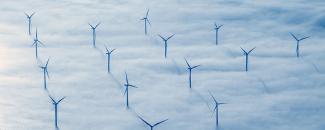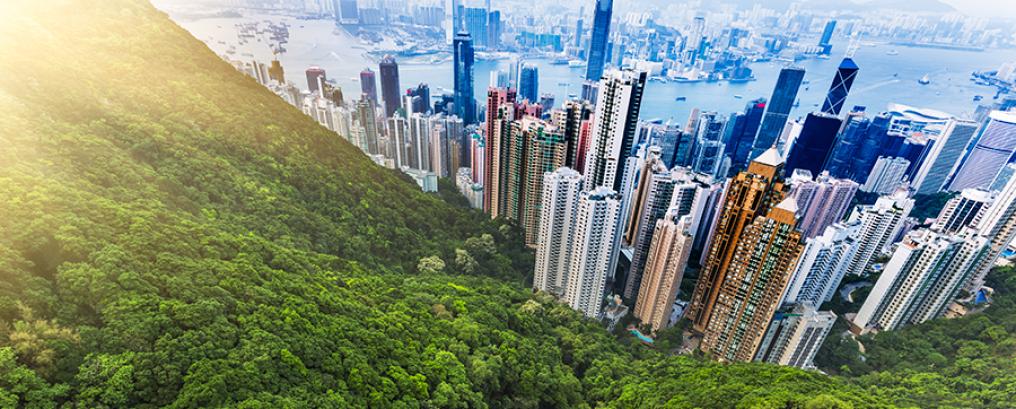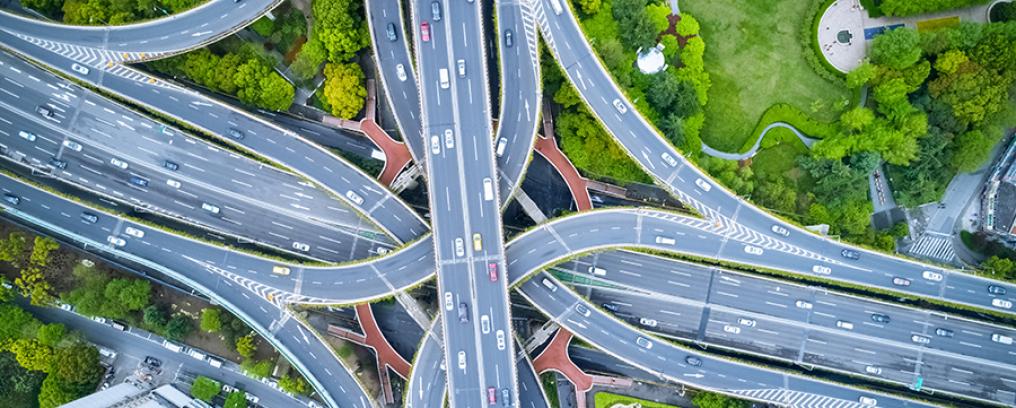The sustainable development of a wind power company benefits not only its business, but also drives and facilitates the development of the entire industry chain and the community. Ma Jinru FCG HKFCG, Vice-President and Board Secretary, Xinjiang Goldwind Science & Technology Co Ltd, shares her experience.
Social responsibility and sustainable development are no longer new to businesses. These concepts have gradually developed from a topic for academic research or the advocacy of environmental and social groups to a series of disclosure rules and regulations enacted by governments and regulators around the world. They have also become top agendas for investment institutions.
Against this background, a growing number of companies have stepped up their efforts to integrate social responsibility and sustainable development into their business models, corporate strategies and operations. Corporate purposes have also moved away from simply pursuing financial performance and shareholder interests to pursuing a comprehensive set of values, namely economic, environmental and social performance.
Sustainability should be deeply rooted in all levels of operation to enable digging deep into the company’s business and a comprehensive enhancement of the company’s business. It is also an important way to drive business development and transformation as well as enhance a company’s competitiveness and brand image. Every company should design and formulate a sustainability strategic plan with an organisational structure to support and foster sustainable development.
The three key aspects of sustainable development
Founded in 1998, Goldwind is one of the first wind power companies in China. Its installed wind power capacity has ranked first in China for 11 consecutive years and has been among the top three in the world for seven consecutive years. With total assets of over RMB119 billion, the company is listed on both the Shenzhen stock exchange and the main board of Hong Kong stock exchange. By the end of 2021, Goldwind had 86GW global installed wind power capacity, over 50GW operation and maintenance service capacity, and over 44,000 operating wind turbines in 32 countries and regions across six continents.
With ‘Innovating for a Brighter Tomorrow’ as its mission, Goldwind is committed to driving global sustainable development through its key wind power business. It strives to fulfill its social responsibility and sustainability transformation by exploring efforts in three main areas, namely its management system, strategic planning and operations.
1. Management system
Sustainable development is a top priority of Goldwind’s board. The board reviews and approves the company’s sustainability work summary, upcoming annual work plans and its sustainability report every year. In addition, a sustainability development committee has been established under the board. Chaired by the board’s chairman and comprised of three executive directors and a number of senior executives, the committee meets four to five times a year to review and approve sustainability strategies and work plans, and to regularly monitor the progress of relevant projects. The company has also established a department of sustainable development management to coordinate and manage its sustainable development projects in order to achieve a better integration of sustainability concerns into company operations.
2. Strategic planning
By combining Goldwind’s operational characteristics, the company has put together a sustainable development strategic plan focusing on five areas: integrity and compliance, green and environmental operations, sustainable industry chain, fair and healthy work environment and harmonious community relations. The plan helps the company identify work priorities for the next three to five years, followed by breaking down the plan into various projects and targets for implementation. The company’s latest sustainable development strategic plan proposed a number of targets, including carbon neutrality at the operational level by 2022, major suppliers’ green power usage ratio to reach 100% by 2025, and 100% recycling of wind turbines by 2040.
3. Operation
I. Green products Goldwind believes that high quality products and services are an integral part of its social responsibility. In relation to quality assurance, the company has established a comprehensive and systematic quality management model. The model is built on the company’s years of practical experience in the areas of corporate culture, organisational support, technological innovation, outstanding industry chain and quality service. Such an approach allows for a continuous improvement of the products and service quality, enabling reliable operation of wind turbines over their 20 to 30-year life cycle.
In relation to low carbon emissions, the company is committed to reducing the level of carbon emissions throughout the life cycle of wind turbines by continuously optimising their design. In 2020, the IVL Swedish Environmental Research Institute released the environmental product declarations (EPD) of the company’s two wind turbines. The amount of carbon emissions produced in these two wind turbines’ full life cycle are 7.25g and 8.04g of carbon dioxide per kilowatt-hour (kWh) respectively, which is less than 1% of fossil fuel power emissions, one-third of photovoltaic emissions, and far lower than the average carbon emission (12g) of the wind power industry.
By the end of 2021, Goldwind’s global cumulative installed capacity exceeded 86GW, with an annual power generation capacity of 193.2 billion kWh. Its annual CO2 emissions generated are 161 million tons less than that of fossil fuels.
In relation to environmental protection, the company has taken into consideration, as early as in the initial planning and design stage, the impacts of wind turbines on birds and the surrounding communities and environment. The company has actively developed bird-repelling technology for detecting and driving birds away from wind farms. Another technological development is the installation of light and shadow testing device which helps to reduce the impact of flickering light through controlling turbine rotational speed and wind farms management. II. Green production Goldwind provides quality and reliable green power to the world, and at the same time has implemented low carbon and environmental measures throughout its entire production process.
The company actively promotes the use of wind power and other renewable energy by gradually increasing the ratio of green power usage in factories through the building of smart microgrids, water storage-based air conditioning solutions and more. In 2021, the company worked on building green factories, with all of its six factories eligible to apply for certification as green factories.
In addition, 50% of the energy used by Goldwind Yizhuang Smart Park, based in Beijing, is renewable energy. Equipped with wind-solar hybrid energy storage facilities, the Park has achieved this level of renewable energy usage through years of efforts building smart microgrids, and implementing energy management and carbon reduction measures. In 2020, the Park offset its annual amount of greenhouse gas emissions by buying China Certified Emission Reduction (CCER) credits. Under this initiative, the Park was certified by a third party assurance organisation as the first carbon neutral park in China.
The packaging of large components in logistics and transportation has been recycled and reused. Digital technology has been implemented to optimise transportation solutions for reducing environmental impacts. In the area of operation and maintenance, a comprehensive approach is adopted for recycling components and parts to maximise usage of resources. In addition, utilisation and treatment technology of decommissioned wind turbines is being actively explored.
III. Green supply chain Goldwind is committed to enabling green transformation and low carbon development of the entire industry chain. In 2016, the company pioneered the ‘Green Supply Chain’ project, aiming at encouraging and motivating suppliers to save energy and reduce emissions so as to improve the overall sustainability performance of the wind power industry chain. To encourage and support suppliers to adopt environmental measures, the company has conducted evaluation of green suppliers for years. In 2021, a total of 40 suppliers have been rated as level 4 and 5 green suppliers, 13 more compared to 2020.
In 2021, Goldwind invited nearly 300 suppliers to sign the ‘Initiative for Green and Low-Carbon Development of the Wind Power Industry Chain’, which calls on suppliers to collaborate with the company in the development of green wind power products for reducing carbon emissions. Under this initiative, Goldwind utilises its expertise in green power production and energy use technology to help companies in the supply chain achieve energy efficiency and support their use of renewable energy wherever possible.
IV. Healthy culture Employee health management is one of the highlights of Goldwind's corporate responsibility initiatives. Premised on the protection of employees’ rights and interests, the company has created and promoted a healthy culture, making it an integral part of the overall corporate culture.
The company has built sports venues covering a total of 11,629 square metres, and employed health management consultants to design and organise online and offline sports courses. The company has established more than 10 art and sports clubs, encompassing badminton, football, table tennis, yoga, swimming, dancing and more. Retired national athletes and professional coaches have been employed to help employees exercise in a scientific way.
The company believes that sports and art activities help employees achieve work-life balance, build a strong physique, enrich their mental wellbeing, so as to enable them to work more energically.
V. Harmonious community relations Goldwind has been actively participating in community development. Tapping into its business strengths, the company has initiated a series of charity activities that drive the development of the communities surrounding its wind farms, supporting education and promoting public health.
The company has established the Beijing Goldwind Public Welfare Foundation for organising charity activities in a systematic and professional way. In 2021, the company's total charity donations amounted to RMB 9.78 million, with 2,284 employee volunteer served hours.
Goldwind has published its sustainability reports for 14 consecutive years. Its ESG performance scored highly by a number of local and international rating agencies, including AA rating by MSCI ESG for three consecutive years, as well as A+ rating by CASVI Sustainability Value Rating.
In addition, the company has been listed in MSCI ESG Leaders Indexes, FTSE4Good Index Series, Hang Seng Corporate Sustainability Index, and more for a number of years. Furthermore, the company ranked second in China's Top 500 ESG Companies by the Sina Finance Golden Kirin Forum, and received numerous awards including the Sustainable Development Award of the Year in China ESG Golden Awards and Sustainable Development and Inclusive Award in Caijing Award.
Ma Jinru FCG HKFCG
Vice-President and Board Secretary, Xinjiang Goldwind Science & Technology Co Ltd
风电企业可持续发展管理
风电企业的可持续发展不仅有利于其业务发展,也带动和促进整个产业链和社区的发展。新疆金风科技股份有限公司副总裁及董事会秘书马金儒女士FCG HKFCG分享她的经验。
社会责任和可持续发展不是一个新的理念,早已从学术界的研究、环保组织和社会团体的倡议,发展为各国政府及监管机构所实施的披露规定和法例,并成为投资机构的首要关注事项之一。
在这种背景下,越来越多的企业将社会责任和可持续发展融入商业模式、公司战略、业务运营等各方面。企业的宗旨也从单纯的追求财务指标和股东利益,转变成追求经济、环境、社会综合价值等指标。
可持续发展根植于企业生产运营的各个领域,是对企业业务的深度挖掘和全面优化,也是推动业务发展、转型和提升竞争力和品牌形象的重要方式。每个企业都应该从战略高度设计和规划公司的可持续发展,从组织系统的角度为公司的可持续发展提供支撑和保驾护航。
可持续发展之三大领域
金风科技成立于1998年,是中国最早从事风力发电业务的企业之一。金风科技的风电装机连续十一年国内排名第一,连续七年全球排名前三,其总资产超过1,190亿元人民币,是深圳主板和香港主板两地上市公司。截至2021年年底,金风科技在全球累计风电装机容量86GW、运维服务量超过50GW,并拥有逾44,000台运行风电机组遍布世界6大洲32个国家和地区。
金风科技以“为人类奉献碧水蓝天,给未来留下更多资源”为企业使命,通过其风电主业贡献全球可持续发展,在管理体系、战略规划和运营三大方面的不懈探索,努力履行社会责任和可持续发展转型。
1.管理体系
金风科技董事会重视可持续发展工作,每年听取相关的工作总结和下一年度工作计划,并审议批准可持续发展报告等。另外,在董事会下设可持续发展委员会,由董事长担任主任,三名执行董事和部分高管担任委员。委员会每年召开四至五次会议,审议确定可持续发展战略规划和工作计划,以及定期监督相关项目的进展等。为更好地将可持续发展理念与业务运营相结合,公司成立可持续发展管理部,负责统筹和管理公司可持续发展相关工作。
2.战略规划
金风科技结合自身业务运营特点,制定可持续发展战略规划,在诚信合规经营、绿色环保运营、可持续风电产业链、公平健康工作环境与和谐社区关系五大范围,明确了未来三至五年可持续发展的重点优先事项,并且分解成相关的项目和目标,逐步在内部推动落实。在最新的可持续发展战略规划中,金风科技提出了在2022年实现运营层面的碳中和、2025年主要供应商的绿色电力使用比例达到100%,以及在2040年实现风机100%回收再利用等目标。
3.运营
I.绿色产品 金风科技认为高质量的产品和服务是其社会责任的重要一环。在质量保障方面,公司通过在文化引领、组织保障、科技创新、全优产业链和优质服务等领域的多年实践,打造全面系统的质量管理模式,持续提升产品的质量和服务的水平,从而保障风机在20至30年的生命周期内能可靠运行。
在低碳方面,公司不断优化风机设计,以降低风电机组全生命周期的碳排放水平。2020年,瑞典环科院对公司生产的两款风机进行全生命周期环境影响评估(EPD),最后得出这两款产品在整个生命周期里,生产每度电碳排放只有7.25克和8.04克,不到火电的1%,是光伏的三分之一,并远远低于风电行业的平均值(12g)。
截至2021年底,金风科技全球累计装机量超过86GW、全年发电量约1,932亿度,相对于火电,等于减少二氧化碳排放1.61亿吨。
在环境保护方面,公司在风机的前期研发设计阶段,已考虑其运行对鸟类及周边社区居民和环境等影响。公司积极开发驱鸟技术,探测和驱赶即将飞入风机运营区域的鸟类,并开发光影测试装置,通过转速控制和扇区管理降低光影闪烁的影响。 II. 绿色生产 金风科技在为世界提供优质绿色可靠电力的同时,自身也在生产运营过程中践行低碳环保行动。
公司积极推广风电等可再生能源的使用,在工厂建设智能微网、水蓄能空调等项目,逐步提升绿色电力使用比例。2021年,实施绿色工厂创建工作,具备申报条件的六个工厂,全部通过绿色工厂认证。
除此之外,位于北京亦庄、配备风光储设施的金风智慧园区,在连续多年建设的智能微网和实施节能减排管理的基础上,可再生能源使用比例达到了50%。2020年,通过购买中国核证减排量(CCER),抵消了园区全年排放的温室气体,并经过第三方认证, 成为中国首个“碳中和”示范园区。
在物流运输阶段,金风科技循环再利用大部件包装材料,以及采用数字化技术优化运输方案,以降低环境影响。在运行维护阶段,公司综合回收利用零部件,实现资源最大化利用,并积极探索风机退役的利用和处理技术。 III. 绿色供应链 金风科技以引导全产业链绿色转型、低碳发展为己任,于2016年率先实施“绿色供应链”项目,影响和带动供应商节能减排,提升整个风电产业链条的可持续发展能力。为鼓励和支持供应商践行环保行动,公司连续多年开展绿色供应商评价工作,2021年共有40家供应商获得四级和五级绿色供应商评价,比2020年增加13家。
2021年,金风科技与近300家供应商签署《风电产业链绿色减碳发展倡议书》,号召供应商与公司共同打造绿色风电产品,以减少碳排放。在这个过程中,金风科技利用自身的绿色电力生产、能源使用技术,帮助供应链企业降低能耗,支持其尽可能使用可再生能源。 IV. 健康文化 员工健康管理工作是金风科技履行企业责任的一大亮点。公司在保障员工各项权益的基础上,在内部创建并推广健康文化,使其成为公司企业文化的重要组成部分。
公司为员工建设了11,629 平方米的多种运动场馆,并聘请员工健康管理顾问,设计和制作线上和线下运动课程。公司设有羽足乒乓、瑜伽、游泳、舞蹈等十余个文体俱乐部,并聘请国家退役运动员、专业教练等,引导员工科学运动和健身。
公司相信,体育和文化活动不仅平衡员工工作和生活,也能增强体魄、丰富精神世界及增加幸福感,从而让员工以更加饱满的状态投入到工作中。 V. 和谐社区 金风科技积极参与社区建设,结合自身的业务优势,在推动风电场周边社区发展、支持教育和促进公共健康方面,开展了丰富的公益活动。
公司成立北京金风公益基金会,更加有系统和专业地开展公益活动。2021年,其公益捐赠总额978万元,员工志愿者投入合共2,284小时。
金风科技连续14年发布可持续发展报告,在国内外资本市场ESG评级中,获多家评级机构高度评价,包括连续三年获得MSCI ESG的AA评级,以及社投盟可持续发展A+评级。
此外,公司连续多年入选MSCI ESG Leaders指数、富时社会责任指数系列和恒生可持续发展指数等。公司在新浪财经金麒麟论坛中发布的中国ESG优秀企业500强榜单中,位列第二位,并获得 “金责奖—年度可持续发展奖”、“长青奖—可持续发展普惠奖”等众多奖项。
马金儒女士FCG HKFCG
新疆金风科技股份有限公司副总裁及董事会秘书



